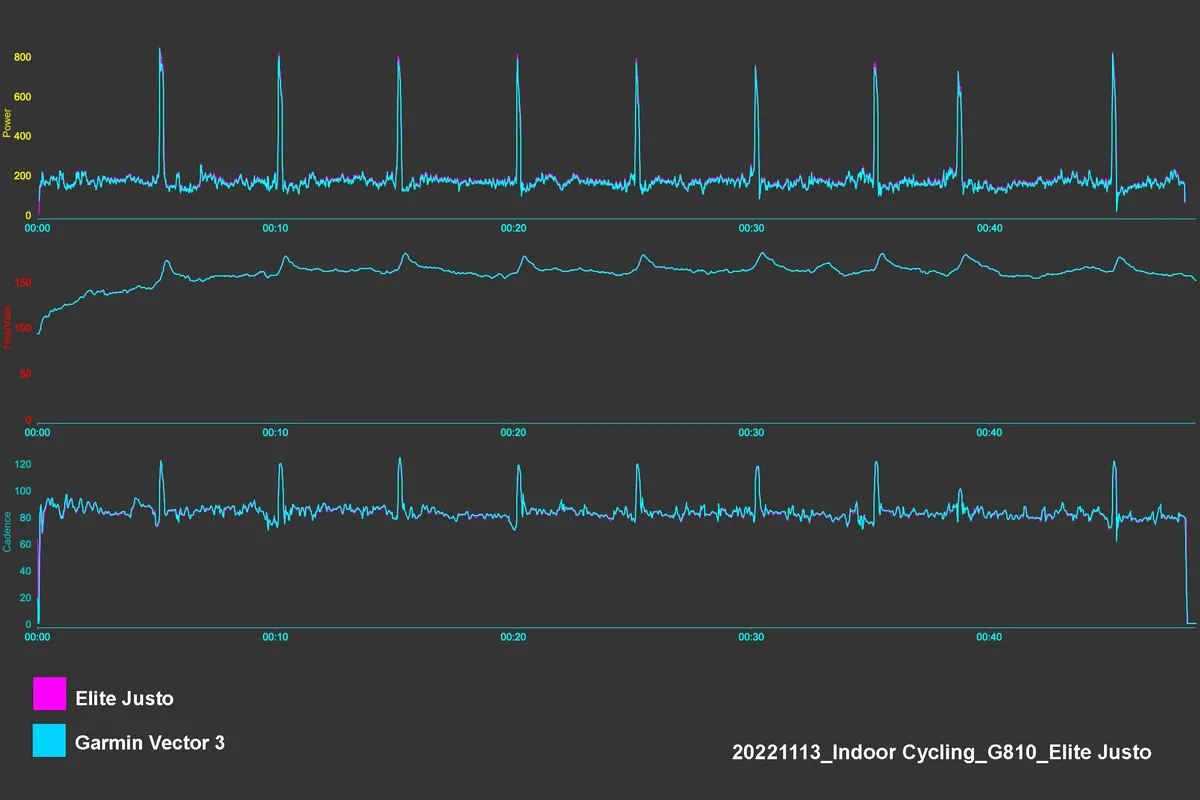The Elite Justo is the Italian brand’s latest flagship smart trainer.
With upgraded specs and a new high-end design, it competes directly with the best smart trainers on the market, such as the Wahoo Kickr V6 and Tacx Neo 2T.
Building upon the Direto XR, Elite says the Justo offers improved ride feel, better power accuracy with automatic calibration and quieter operation.
These improvements don’t come for free, however, with the Justo costing £999.99 / $1,199.99 / €949.99 – a price rise of £170 over the Direto XR.
Overall, the Elite Justo follows up the solid performance of the Direto XR and directly addresses many of the small issues that trainer had.
However, while the Justo impresses in many areas and undercuts its main rivals in the high-end smart trainer space on price, it isn’t quite perfect in every way.
Elite Justo setup
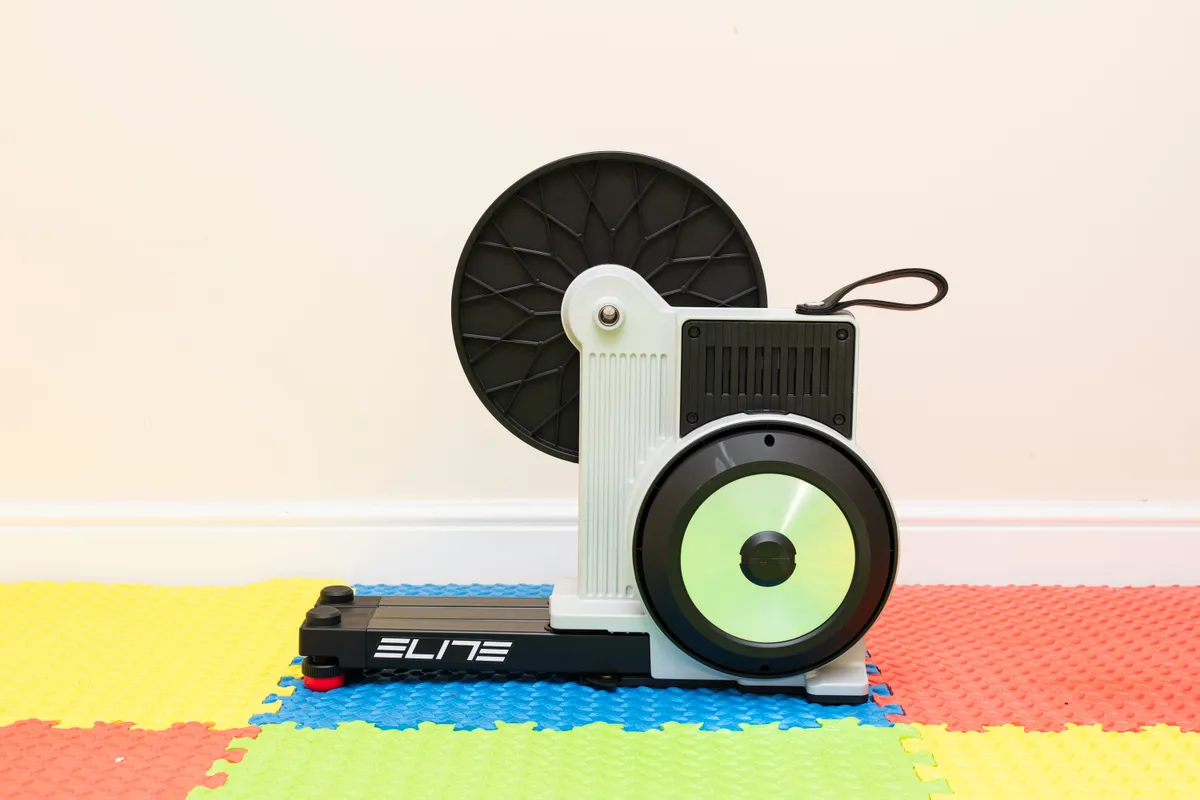
The Elite Justo arrives almost fully assembled, making setup relatively easy.
The only part of the trainer that needs to be attached is the plastic flywheel cover, but that requires installing just two Phillips head screws.
Unlike the Direto XR, the Justo doesn’t include a cassette. Unless you already have a spare one, you’ll need to factor one in (plus tools to install it) into the total cost.
Given some Elite trainers, such as the Suito and Direto XR, have included an 11-speed Shimano/SRAM-compatible cassette in the past, this is disappointing when you consider the recent price rises across the cycling industry.
The Zwift Hub, for example, includes a choice of an 8- to 12-speed cassette despite costing less than half what the Justo does.
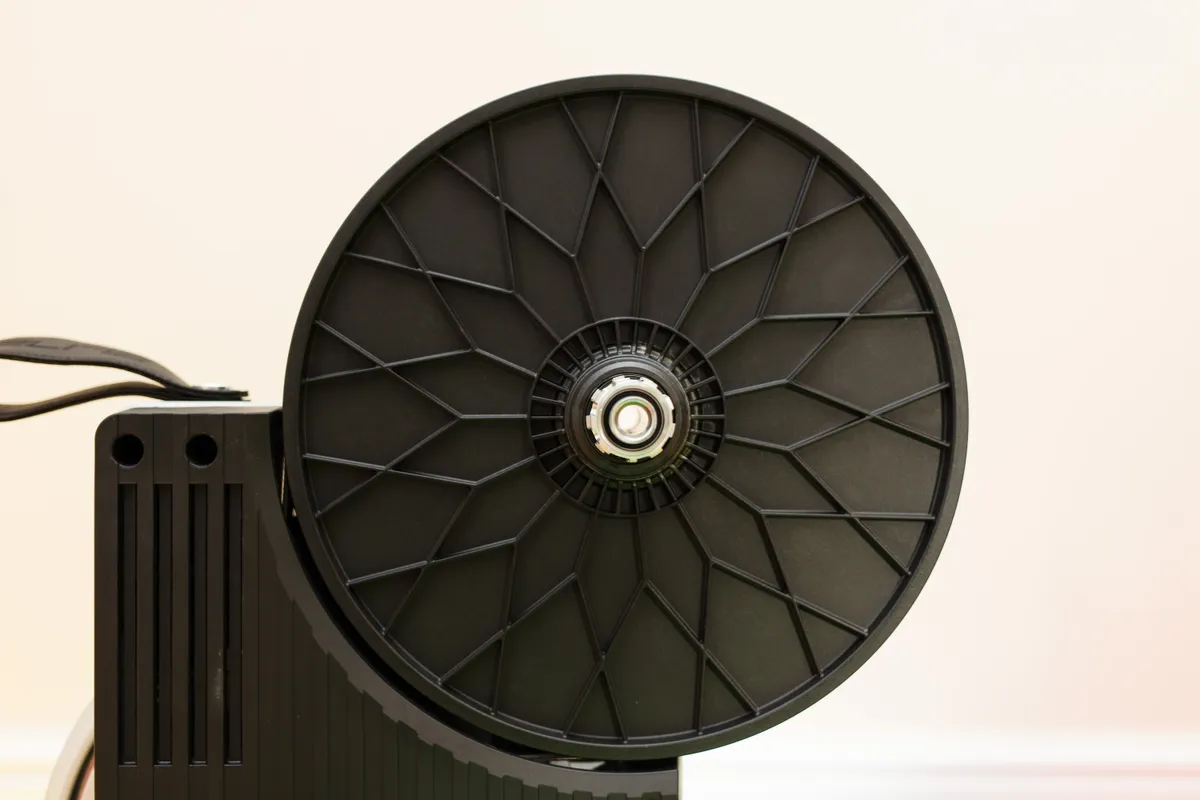
The Justo ships with a Shimano HG-compatible freehub by default, but options for Campagnolo 9- to 12-speed, SRAM XD and XDR, and Shimano Micro Spline are available separately.
The Elite Justo arrives with adaptors for 142x12mm thru-axles and 130/135x10mm quick-release skewers, but riders with bikes that have different axle standards will need to purchase adaptors separately.
This is most likely to affect owners of mountain bikes with Boost or Super-Boost rear spacing, although some older disc brake road bikes and gravel bikes may also need something different.
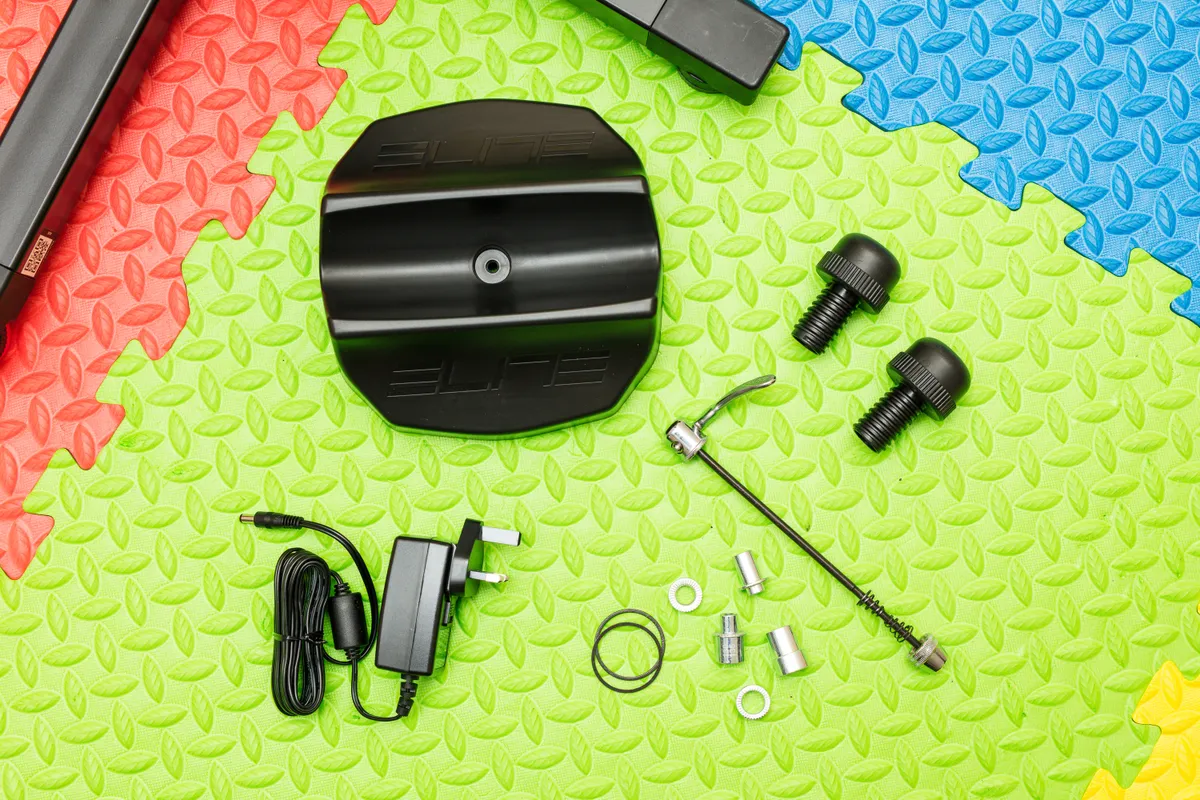
A quick online search shows such adaptors are readily available for around £5 to £8, but it seems miserly that a 148x12mm adaptor isn’t at least included (as it is with the Wahoo Kickr V6 and many other smart trainers), given it’s currently the most common axle spacing for mountain bikes.
Happily, a front-wheel riser block is included, which helps keep the front wheel level and stable while riding.
The support legs also fold into the main body of the trainer, making the Justo fairly compact to stow away once you’re done with it, if you don’t have a dedicated space to leave it set up.
Elite Justo build quality
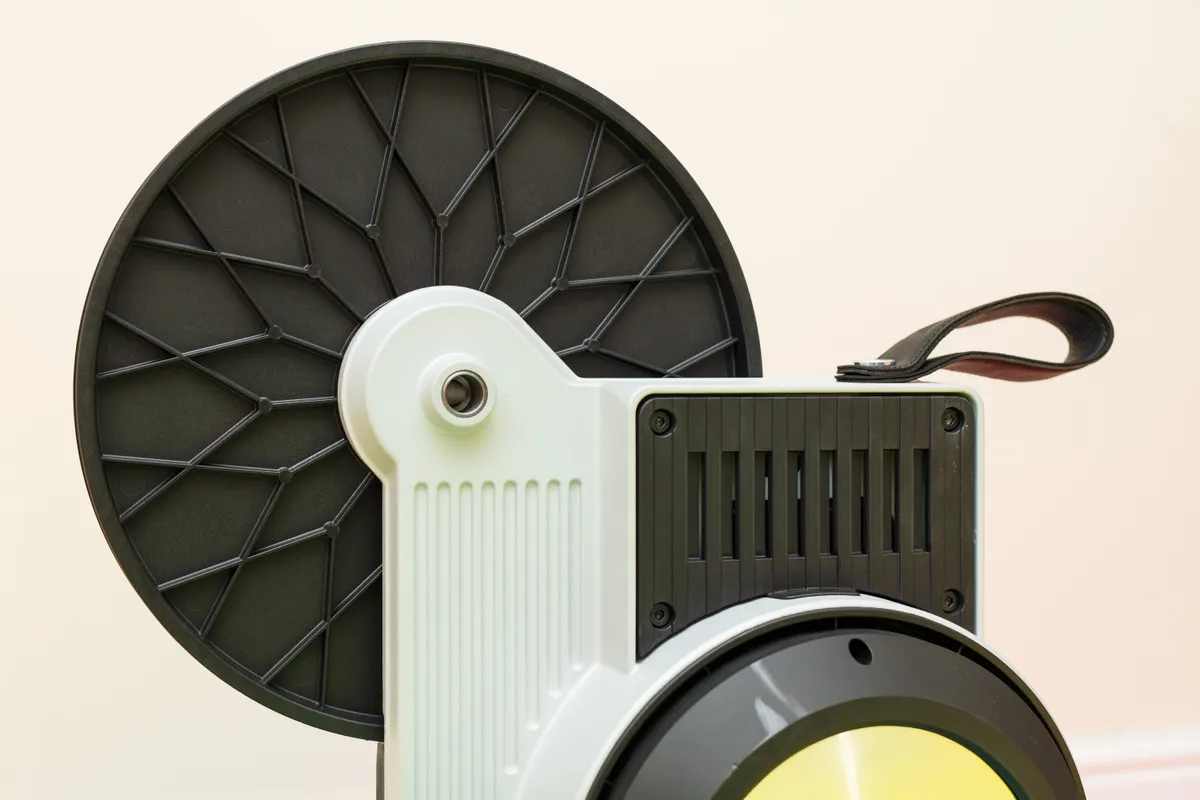
One thing that’s immediately obvious about the Justo is its improved design and build quality versus the Direto XR.
While the Direto XR is a fantastic smart trainer in terms of its functionality, it doesn’t offer the same premium construction or modern design of its high-end competitors.
In contrast, the Justo shares much of its design language with the Elite Suito (one of its mid-range direct-drive smart trainers). Although its die-cast metal body and mix of grey and black colouring lend it a look somewhat akin to a commercial meat slicer, it looks and feels like a much more premium product.
Elite claims the Justo uses 40 per cent less plastic in its construction than the Direto XR, and this is immediately noticeable when comparing the two side by side.
The Justo doesn’t quite hit the same lofty build-quality heights as the Wahoo Kickr, however. The buttons used to unlock the support legs are still plastic, for example, and the plastic flywheel cover also feels a bit flimsy.
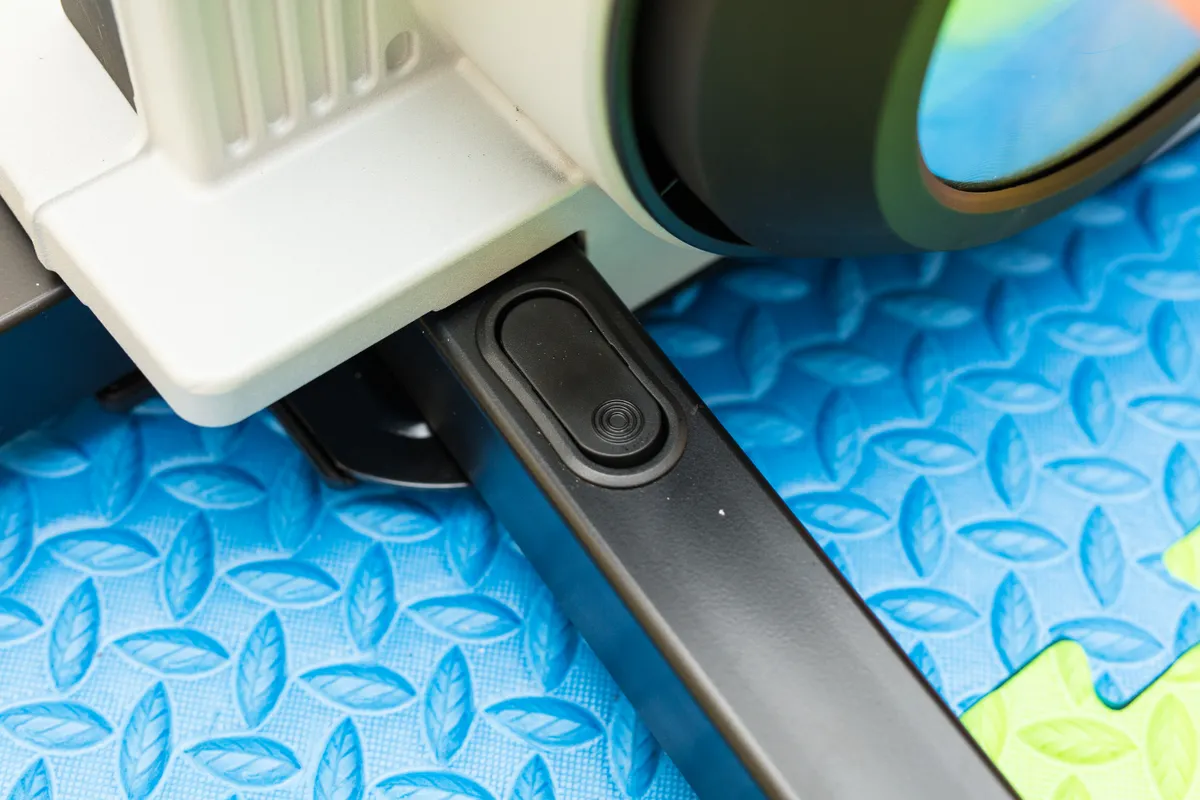
Still, though, these are nitpicks. On the whole, it’s a significant step up compared to what came before.
At 17kg, the Justo is far from the heaviest smart trainer available. It strikes a good balance between having enough ballast to not jump around underneath you during efforts, without being so heavy you need to ask for help when moving it around.
The integrated faux-leather loop handle is useful, but I’d prefer something more solid. On the Suito and Kickr V6, these lessen the possibility for the trainer to swing around unpredictably while lifting it with one hand.

Elite Justo performance
Connectivity
As with most smart trainers, the Elite Justo can communicate with smart devices via Bluetooth, ANT+ and ANT+ FE-C.
Conveniently, the Justo can act as a bridge for devices such as heart rate monitors, incorporating the data into its own stream to your connected device.
This can be set up in Elite’s MyETraining app (available for iOS and Android), and can be helpful if you use an Apple TV or an older ANT+ heart rate monitor that isn’t compatible with Bluetooth devices.

Unlike the recently released Wahoo Kickr V6, though, the Justo doesn’t offer WiFi connectivity.
As things stand, this doesn’t feel like a major omission – smart trainers have come this far without WiFi, and the Kickr V6 is currently the only smart trainer to offer this capability.
The Justo does have a connection port for a hardwired internet connection but, annoyingly, you can’t just plug in an ethernet cable and connect it directly to your local network.
Instead, you’ll need to purchase a separate dongle (as is also required to use a wired connection with the Kickr V6), although at the time of writing this accessory isn’t actually available.
According to Elite, this dongle (which is set to be called the Elite Gateway) is due to be available in spring 2023 for £89.99.
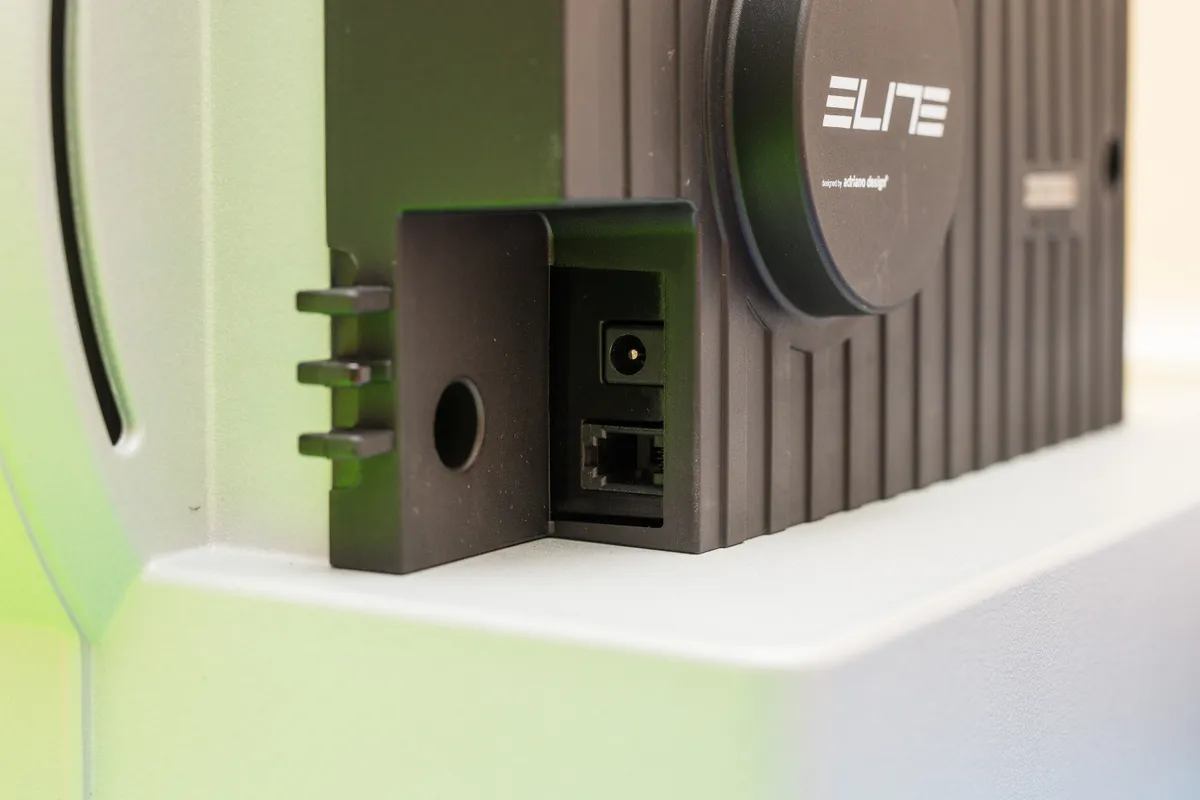
Given Elite is obviously aware that having an internet-connected trainer is something certain riders want, why it didn’t just build the hardware of this dongle into the Justo is puzzling, to say the least.
Still, given this likely affects only a small number of riders (mostly dedicated esports racers, for whom having a reliable and stable connection is vital), it’s not the end of the world.
Elite Justo ride feel

The Justo can simulate climbs up to 24 per cent and can handle up to 2,300 watts in a sprint, which should be more than enough for every indoor cycling app and cyclist out there.
One of the key upgrades to the Justo is a new 6.2kg flywheel, which represents a 21.5 per cent increase compared to the Direto XR.
That’s still over a kilogram lighter than the 7.3kg flywheel on the Kickr V6, but it does outclass cheaper direct-drive smart trainers such as the Zwift Hub (4.7kg), Wahoo Kickr Core (5.4kg) and Elite Suito (3.5kg).
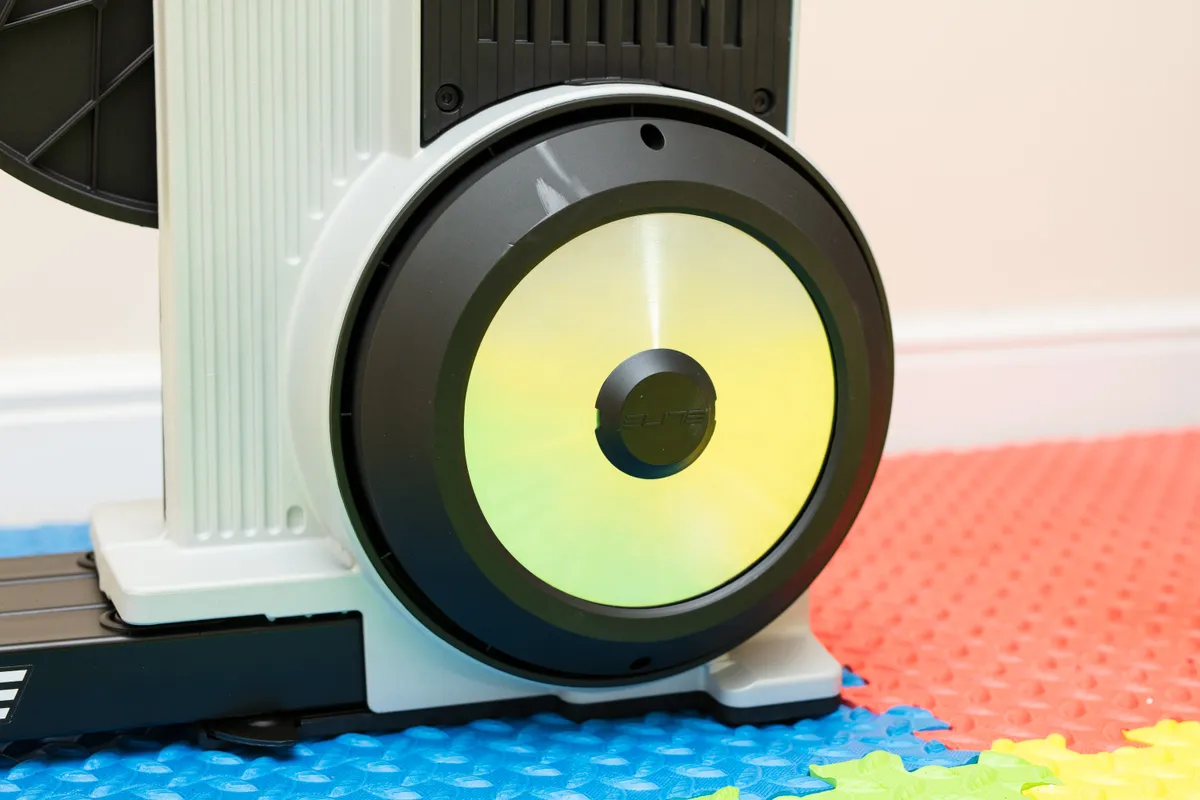
Overall, despite the difference in flywheel weight, there’s very little to separate the Justo and the Wahoo Kickr in terms of ride feel.
There’s plenty of inertia and the Justo reacts quickly and smoothly to in-game gradient changes.
The side to side movement enabled by the Flex Feet is a small but noticeable improvement versus the Direto XR, too.
Two options are included, a softer red set (these come pre-installed and are what I used for testing) and a harder black set, for those who want less flex.
It’s not a night and day difference in ride feel, but it is detectable when riding out of the saddle, where your bike feels slightly less bolted in place beneath you.
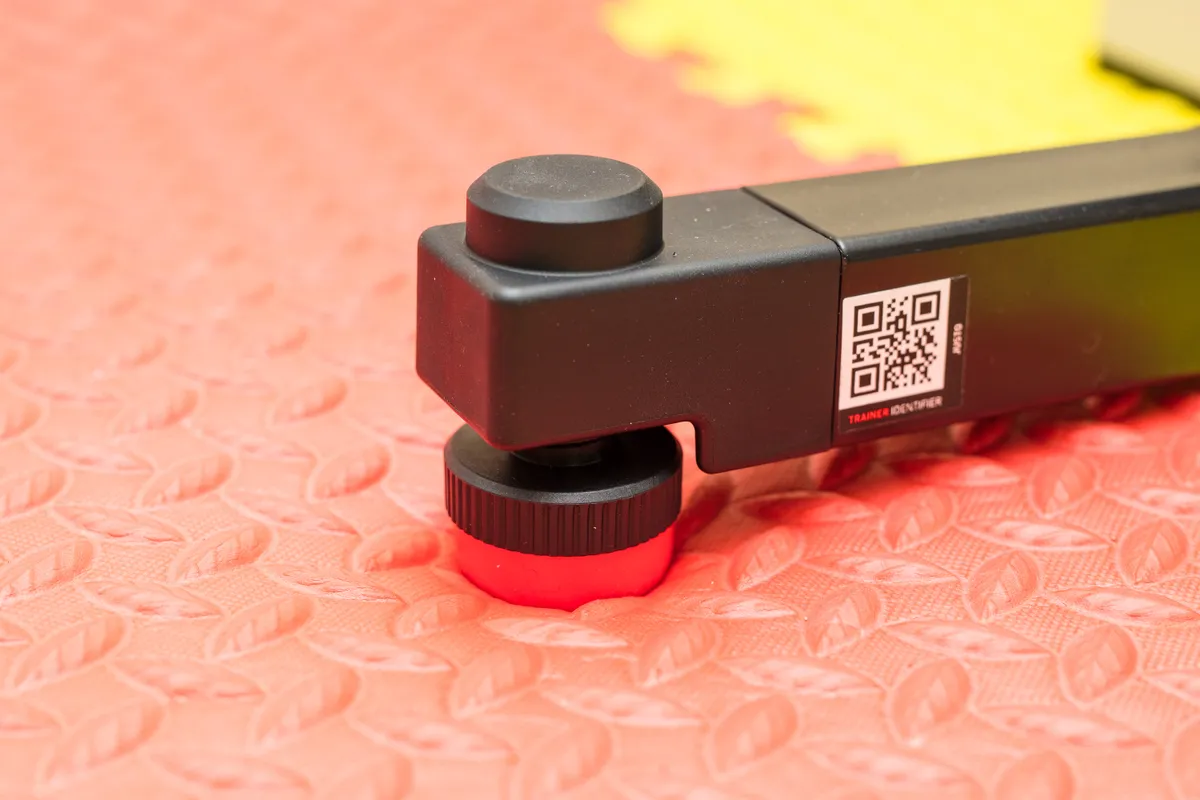
Do they “reduce fatigue and tension in the shoulder and back muscles”, as Elite claims? Not as far as I can tell, although it’s fair to say I’ve never noticed particular shoulder and back fatigue or tension from indoor riding on any trainer.
In my experience, the main issue with indoor cycling tends to be increased saddle pressure from the lack of coasting and shorter periods spent standing on the pedals (this is especially noticeable when riding a time trial bike indoors). The Flex Feet didn’t appear to do anything to alleviate that, either.
If you’re after a more expansive indoor cycling setup, Elite has you covered with a broad range of accessories, such as the Elite Rizer (£824.99), a climb simulator similar in concept to the Wahoo Kickr Climb, or the Elite Sterzo Smart (£74.99), a front-wheel riser block that enables in-game steering.
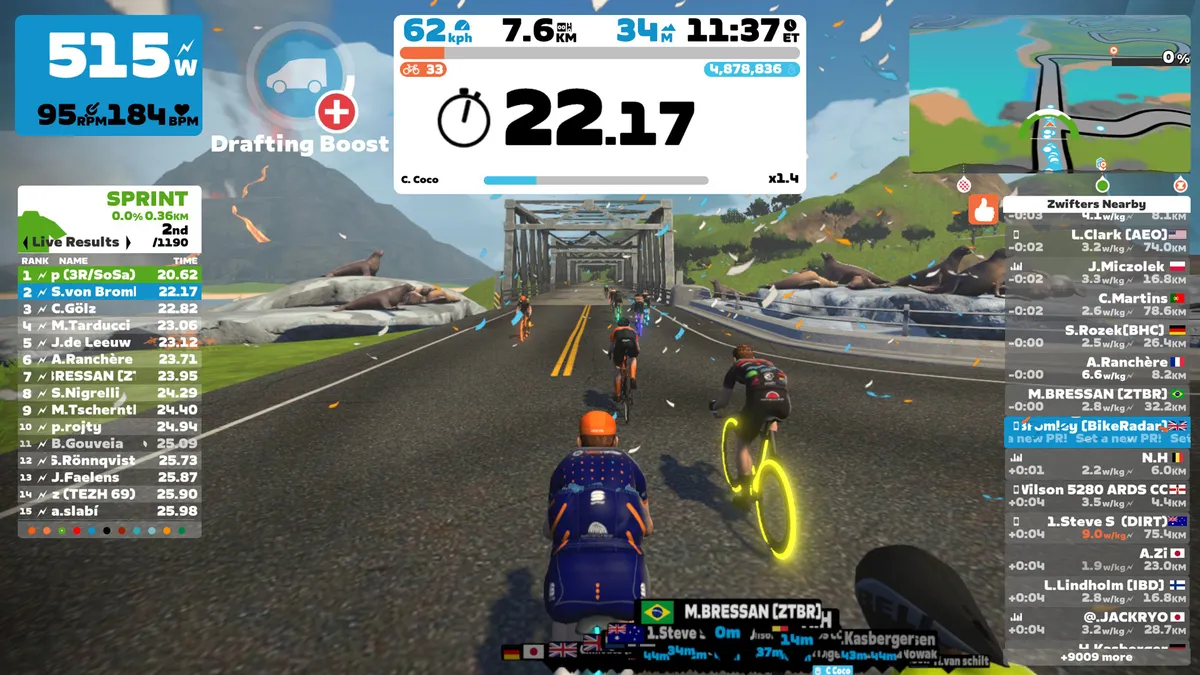
ERG Easy Start
Similar to the Wahoo Kickr V6, the Elite Justo also has a feature to make restarting interrupted ERG mode workouts slightly easier.
Called ERG Easy Start, it drops the resistance to your pedalling to zero for a few seconds after you restart a workout. This allows you a few seconds to come up to the target wattage before it clamps back on again.
This is a great feature for those who perform these types of workouts regularly, because it means you’re far less likely to experience the so-called ‘spiral of death’ if you need to restart an interrupted workout during a high-intensity interval.
Elite Justo noise
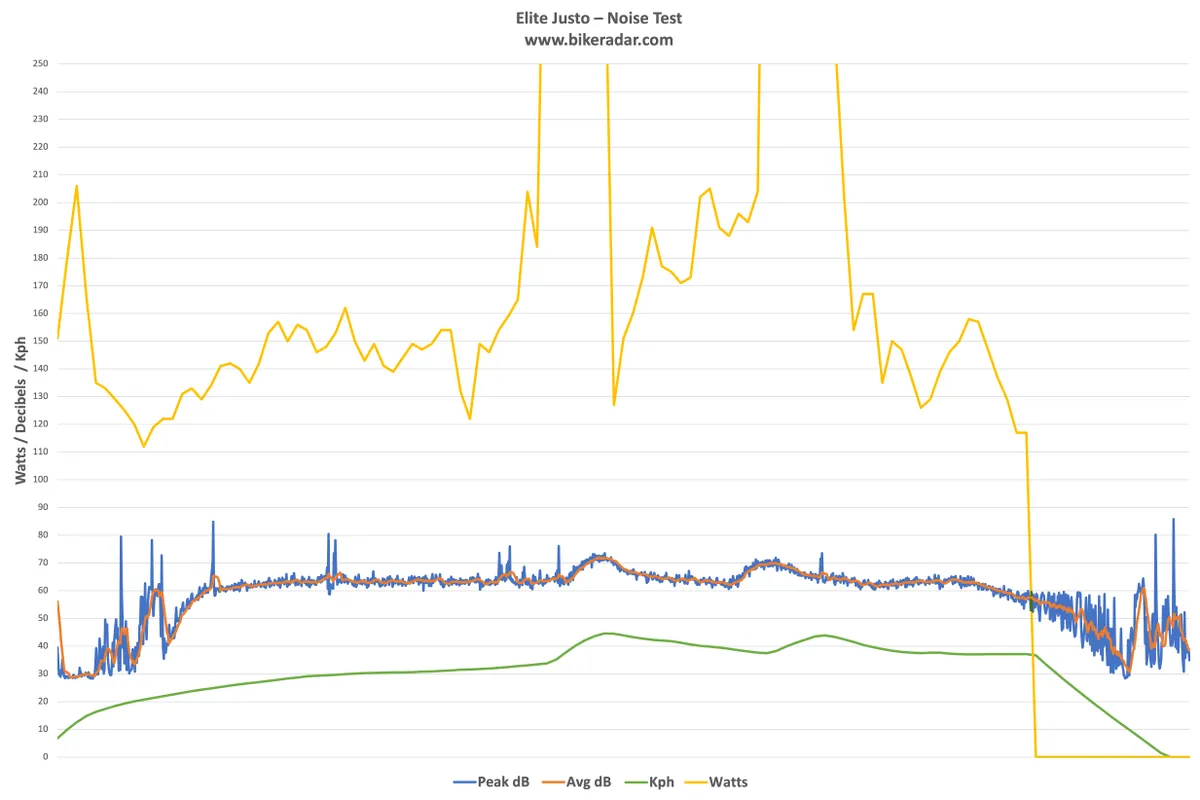
Noise is another area Elite says it has improved versus the Direto XR.
I found this to be true, generally, although it’s still not the quietest smart trainer available.
When just riding along, at 30kph or so, the Justo averaged a fairly quiet 63 decibels.
In sprints, though, noise levels from the Justo do pick up, peaking at 72 decibels at around 45kph.
This was measured by recording decibel data from a ride on an iPhone placed one metre away from the trainer, parallel to the drivetrain side of my bike.
As always, your results may differ depending on what drivetrain and chain lube you’re using. As a point of comparison, though, the Kickr V6 put out 61 decibels at 30kph, and rose to 65 decibels at 45kph in my testing using the same setup.
Both were surpassed by the Zwift Hub, though, which averaged around 60 decibels at 30kph and, impressively, only just ticked over 63 decibels at 45kph.
Numbers aside, though, once my large fan is switched on and I’ve got my headphones in, I can’t tell the difference between any of the above trainers in terms of noise, even if those differences do exist on paper.
For me, the Justo is quiet enough. But, if the lowest noise levels possible from a smart trainer is a priority for you, then it may be something to consider.
Elite Justo power accuracy
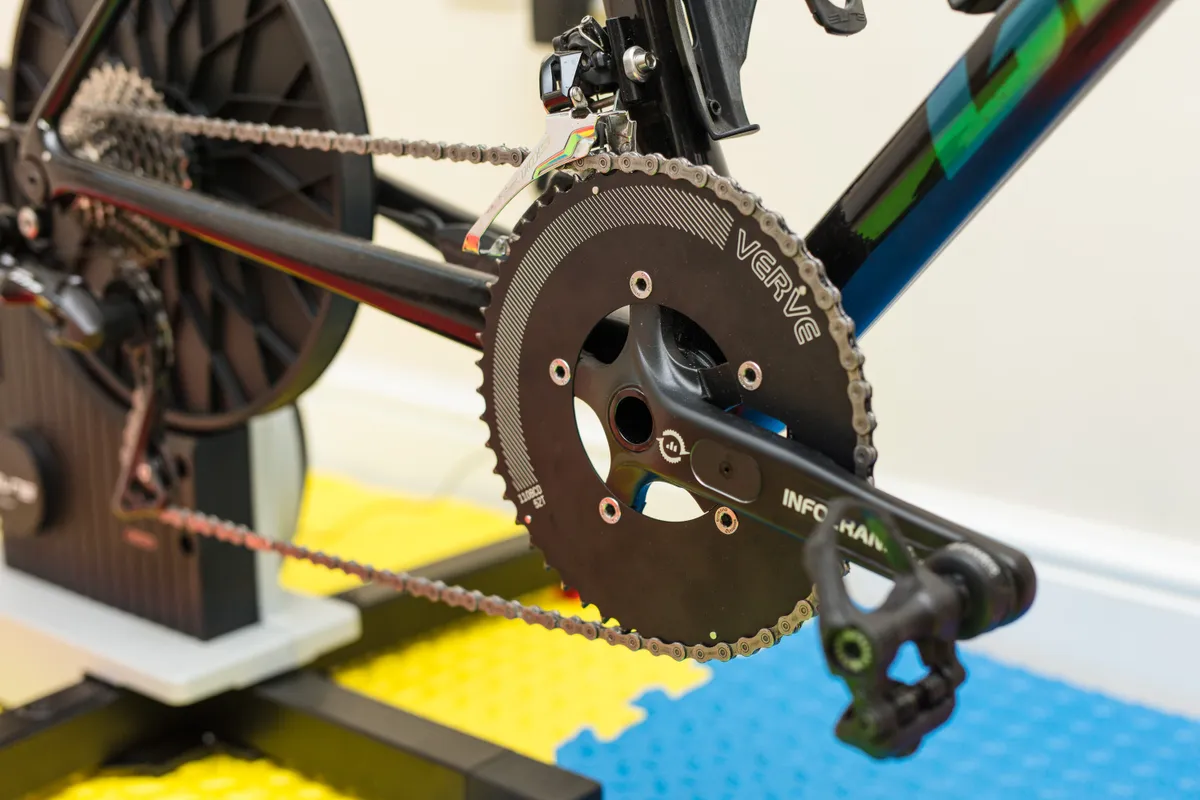
Elite claims the Justo has increased its power accuracy by 33 per cent compared to the Direto XR, bringing its error margin down from +/- 1.5 per cent to +/- 1 per cent.
It has also introduced an automatic calibration feature, which removes the need to periodically perform manual spin-down calibrations.
As noted in my Wahoo Kickr V6 review, this is a great feature to have because it means you no longer need to interrupt your indoor rides to perform a calibration – the Justo just does it on the fly, as you ride.
On paper, these additions bring it into line with its main competitors, the Wahoo Kickr V6 and the Tacx Neo 2T.
In practice, the power and cadence data accuracy from the Elite Justo is very good overall, although there is one small area Elite could improve on.
In terms of power, the Justo was spot on, matching some of the best power meters available, such as a Verve InfoCrank Classic, and Favero Assioma Duo and Garmin Vector 3 power meter pedals.
With cadence, things are, again, mostly very solid. However, things start to fall apart a bit when climbing consistently steep virtual gradients for extended periods, such as when climbing Alpe du Zwift.
In these scenarios, cadence oscillates between being accurate and under-reporting by about 50 per cent.

This is also somewhat of an issue with the Direto XR, and, in fairness, it doesn't overly affect the in-app experience if you don’t mind just ignoring the on-screen cadence data while climbing.
It would be frustrating if you use cadence as a metric to help pace yourself during efforts, though.
Hopefully, this is something Elite can refine through a future firmware update.

Elite Justo bottom line
The Elite Justo improves on its predecessor in a number of notable ways.
It’s easy to set up, offers solid build quality with an elegant, modern design, and delivers excellent ride feel and power accuracy.
The new automatic calibration function also works excellently.
There are, however, still a few details that hold it back from matching its high-end competitors.
The lack of an included cassette or adaptor for 148x12mm thru-axles can be solved with more cash (if you don’t have a spare cassette handy), but that inevitably eats into some of its price advantage compared to the Wahoo Kickr V6.
Likewise, the deterioration of the cadence accuracy at sustained higher resistances isn’t deal-breaking, but is sub-standard to see on such an expensive smart trainer.
That it’s slightly noisier than its competitors is a bit of a niggle too, as is the fact you’ll need to buy an £89.99 dongle if you ever want to connect it to the internet.
Overall, the Elite Justo is a good smart trainer that gets a lot of the basics right, but it doesn’t do quite enough to lift itself above the competition.
Product
| Brand | Elite |
| Price | €949.99, £999.99, $1199.99 |
| Weight | 17.00kg |
Features
| Mount | direct_drive |
| Folding legs | yes |
| Trainer type | smart_trainer |
| Resistance type | electromagnetic |
| Wheel size | 29in_700c |
| Connectivity | antPlus |
| Connectivity | antPlus_fe_c |
| Connectivity | ble |
| Connectivity | bluetooth |
| Device compatibility | android |
| Device compatibility | ios |
| Device compatibility | mac |
| Device compatibility | windows |
| Noise | 63.0000 |
| Noise | DECIBEL |
| Max power | 2300.0000 |
| Max power | WATT |
| Flywheel weight | 6.2000 |
| Flywheel weight | KILOGRAM |
| Max grade (degrees) | 24.0000 |
| Hub compatibility | 130/135x10mm quick release, 12x142mm and 12x148mm thru axle |

